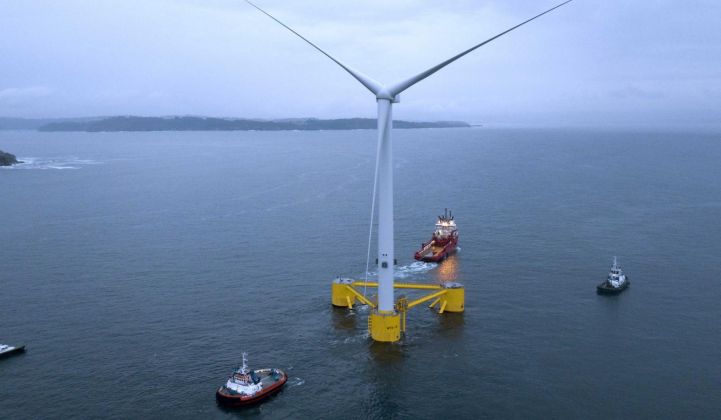European utility giants EDP and Engie have finalized their 50-50 offshore wind collaboration amid a race for scale in the global offshore wind market.
The pair revealed the plan in May last year after agreeing on a memorandum of understanding. EDP Renewables' and Engie's existing offshore wind projects, in various stages of construction and development, will be folded into the new entity. The aim is for the new company to be a top-five developer of offshore wind globally.
The deal remains subject to regulatory approval by the European Commission but is expected to close during the first quarter of 2020.
The as-yet-unnamed JV will have 1.5 gigawatts under construction including the 950-megawatt Moray East project in the U.K. and the 487-megawatt SeaMade venture in Belgium. The combined development portfolio is 3.7 gigawatts, of which around half is located in Europe and half in the U.S.
Engie and EDPR are not corporate minnows in their own right. That they feel they need to reach for even more scale says a lot about existing and future entrants in the offshore wind sector.
According to its Q3 results, industry leader Ørsted has 9.9 gigawatts of offshore wind installed or with the final investment decision in place.
Equinor and Shell have already made a splash, and BP and Total are likely to follow. Shell and EDPR are partners in the Mayflower consortium that won 804 megawatts of offshore wind capacity in Massachusetts.
In first announcing the JV back in May 2019, Engie and EDPR said joining forces would allow them to "grow their asset base more rapidly and to operate more efficiently.”
A spokesperson for EDPR told GTM more details on the joint venture would be released at the end of Q1.
An eye on both bottom-fixed and floating offshore wind
It is not currently known if there is a financial component to the deal to level out the portfolio at 50-50. There are no details on any potential job losses as a result of the merging of capabilities.
EDPR has being selling down its stake in the 950-megawatt Moray East project, with Engie taking a 23.3 percent stake before adding another 10 percent. China Three Gorges has another 10 percent, and Mitsubishi holds a 33.4 percent stake. Moray East won a contract for difference in 2017 at a strike price of £57.50 ($75.30) per megawatt-hour.
The announcement of the new joint venture also made the point of stating that the deal included both fixed bottom and floating offshore wind.
The pair represent a 79.4 percent holding in the Windplus consortium together with Spanish oil firm Repsol and minority partner Principle Power. Earlier this year they connected the world’s largest floating turbine to the Portuguese grid.
EDPR, WindPower Korea and oil engineering firm Aker plan to use Principle Power’s WindFloat technology to build a 500-megawatt floating project in South Korea. The KFWind consortium plans to use shipyards in Ulsan to deliver the potential project. South Korea is aiming for 13 gigawatts of offshore wind by 2030. EDPR’s stake in the consortium is included in the agreement with Engie.
Floating offshore wind unlocks huge swathes of potential seabed where deeper waters or soil conditions rule out fixed foundations.
Equinor has approved an 88-megawatt floating project to power two of its drilling platforms. Shell acquired the offshore wind developer Eolfi last year.




